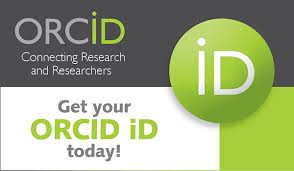Estrategias basadas en la neurociencia y su incidencia en el aprendizaje de las matemáticas en estudiantes de secundaria
Resumen
Las matemáticas representan una de las asignaturas con mayor dificultad para los estudiantes de secundaria debido a su carácter abstracto y a las limitaciones cognitivas implicadas en su aprendizaje. Diversas investigaciones han destacado la relevancia de aplicar estrategias basadas en la neurociencia para mejorar el rendimiento académico, al considerar cómo funciona el cerebro durante el procesamiento matemático.
El objetivo de este estudio fue analizar la incidencia de estrategias pedagógicas fundamentadas en principios neurocientíficos en el aprendizaje de las matemáticas en estudiantes de secundaria. Se adoptó un enfoque cuantitativo, con un diseño no experimental, de tipo correlacional y corte transversal. La muestra estuvo compuesta por estudiantes de educación secundaria, y se emplearon instrumentos estructurados para medir el impacto de las estrategias implementadas. Los datos fueron analizados mediante estadística descriptiva e inferencial, incluyendo media, desviación estándar y análisis de correlación.
Los resultados evidenciaron una relación significativa entre la aplicación de estrategias neuroeducativas y la mejora de factores motivacionales, cognitivos y funcionales relacionados con el aprendizaje matemático. En particular, se observó una activación equilibrada de habilidades simbólicas y no simbólicas, así como un fortalecimiento del sentido numérico. Se concluye que el uso de estrategias basadas en la neurociencia promueve un aprendizaje más significativo y duradero, al considerar la arquitectura cerebral y las etapas del desarrollo cognitivo del estudiante. Por tanto, se recomienda integrar estos enfoques en la práctica docente para transformar la enseñanza tradicional de las matemáticas en una experiencia más accesible y efectiva.
Palabras clave
Referencias
Al Dahhan, N. Z., Kirby, J. R., & Munoz, D. P. (2016). Understanding Reading and Reading Difficulties Through Naming Speed Tasks: Bridging the Gaps Among Neuroscience, Cognition, and Education. AERA Open, 2(4). https://doi.org/10.1177/2332858416675346
Arsalidou, M., Pawliw-Levac, M., Sadeghi, M., & Pascual-Leone, J. (2018). Brain areas associated with numbers and calculations in children: Meta-analyses of fMRI studies. Developmental Cognitive Neuroscience, 30, 239–250. https://doi.org/10.1016/j.dcn.2017.08.002
Arsalidou, M., & Taylor, M. J. (2011). Is 2+2=4? Meta-analyses of brain areas needed for numbers and calculations. NeuroImage, 54(3), 2382–2393. https://doi.org/10.1016/j.neuroimage.2010.10.009
Buckley, S., Reid, K., Goos, M., Lipp, O. V., & Thomson, S. (2016). Understanding and addressing mathematics anxiety using perspectives from education, psychology and neuroscience. Australian Journal of Education, 60(2), 157–170. https://doi.org/10.1177/0004944116653000
Cunha, K. M., & Sholl-Franco, A. (2016). COGNITION AND LOGIC: ADAPTATION AND APPLICATION OF INCLUSIVE TEACHING MATERIALS FOR HANDS-ON WORKSHOPS. Journal of Research in Special Educational Needs, 16, 696–700. https://doi.org/10.1111/1471-3802.12203
Davidesco, I. (2020). Brain-to-brain synchrony in the stem classroom. CBE Life Sciences Education, 19(3), 1–6. https://doi.org/10.1187/cbe.19-11-0258
Fyfe, E. R., McNeil, N. M., Son, J. Y., & Goldstone, R. L. (2014). Concreteness Fading in Mathematics and Science Instruction: A Systematic Review. In Educational Psychology Review (Vol. 26, Issue 1, pp. 9–25). Springer Science and Business Media, LLC. https://doi.org/10.1007/s10648-014-9249-3
Gaidoschik, M. (2024). Number Line Estimation Tasks: a Mathematics Education Perspective at a Task Type Prominent in the Cognitive Neurosciences. Journal Fur Mathematik-Didaktik, 45(1). https://doi.org/10.1007/s13138-023-00229-x
Gashaj, V., Oberer, N., Mast, F. W., & Roebers, C. M. (2019). The Relation Between Executive Functions, Fine Motor Skills, and Basic Numerical Skills and Their Relevance for Later Mathematics Achievement. Early Education and Development, 30(7), 913–926. https://doi.org/10.1080/10409289.2018.1539556
Gashaj, V., Trninić, D., Formaz, C., Tobler, S., Gómez Cañón, J. S., Poikonen, H., & Kapur, M. (2024). Bridging cognitive neuroscience and education: Insights from EEG recording during mathematical proof evaluation. Trends in Neuroscience and Education, 35. https://doi.org/10.1016/j.tine.2024.100226
Hermida, M. J., Segretin, M. S., Prats, L. M., Fracchia, C. S., Colombo, J. A., & Lipina, S. J. (2015). Cognitive neuroscience, developmental psychology, and education: Interdisciplinary development of an intervention for low socioeconomic status kindergarten children. Trends in Neuroscience and Education, 4(1–2), 15–25. https://doi.org/10.1016/j.tine.2015.03.003
Hernández-Sampieri, R., & Mendoza, C. P. (2018). Metodología de la Investigación (Séptima).
Khramova, M. V., Bukina, T. V., Smirnov, N. M., Kurkin, S. A., & Hramov, A. E. (2023). Prevalence of neuromyths among students and pre-service teachers. Humanities and Social Sciences Communications, 10(1). https://doi.org/10.1057/s41599-023-02412-4
Lagarda, A., Barceló, J. G., & Novela, G. (2016). Revista de Métodos Cuantitativos para la Economía y la Empresa. Revista de Métodos Cuantitativos Para LaEconomía y La Empresa, 24, 129–146. http://www.redalyc.org/articulo.oa?id=233154079004
Laurillard, D. (2016). Learning number sense through digital games with intrinsic feedback. In Australasian Journal of Educational Technology (Issue 6). http://www.gl-assessment.co.uk/products/dyscalculia-screener
Mogollón, E., & Rafael Belloso Chacín Maracaibo, U. (2010). Aportes de las neurociencias para el desarrollo de estrategias de enseñanza y aprendizaje de las Matemáticas Contributions of Neuroscience to Develop Teaching Strategies and Learning of Mathematics. In Revista Electrónica Educare: Vol. XIV.
Olkun, S. (2022). How Do We Learn Mathematics? A Framework for a Theoretical and Practical Model. International Electronic Journal of Elementary Education, 14(3), 295–302. https://doi.org/10.26822/iejee.2022.245
Pérez Buelvas, H., & Severiche Mendoza, C. A. (2023). Desarrollo del pensamiento crítico, los procesos metacognitivos y motivacionales para una educación de calidad. Revista Latinoamericana Ogmios, 3(6), 113–118. https://doi.org/10.53595/rlo.v3.i6.058
Pincham, H. L., Matejko, A. A., Obersteiner, A., Killikelly, C., Abrahao, K. P., Benavides-Varela, S., Gabriel, F. C., Rato, J. R., & Vuillier, L. (2014). Forging a new path for Educational Neuroscience: An international young-researcher perspective on combining neuroscience and educational practices. Trends in Neuroscience and Education, 3(1), 28–31. https://doi.org/10.1016/j.tine.2014.02.002
Procopio, M., Fernández-Cézar, R., Fernandes-Procopio, L., & Yánez-Araque, B. (2024). Neuroscience-Based Information and Communication Technologies Development in Elementary School Mathematics through Games: A Case Study Evaluation. Education Sciences, 14(3). https://doi.org/10.3390/educsci14030213
Rivera-Rivera, E. (2019). El neuroaprendizaje en la enseñanza de las matemáticas: la nueva propuesta educativa. Entorno, 67, 157–168. https://doi.org/10.5377/entorno.v0i67.7498
Romero Parra, R. M., Barboza Arenas, L. A., Espina-Romero, L. C., Garcés Rosendo, E. J., & Rodríguez Ángeles, C. H. (2022). Effects of a Neuroscience-Based Instructional Guide on College Student Learning. International Journal of Learning, Teaching and Educational Research, 21(2), 33–48. https://doi.org/10.26803/ijlter.21.2.3
Sokolowski, H. M., Fias, W., Mousa, A., & Ansari, D. (2017). Common and distinct brain regions in both parietal and frontal cortex support symbolic and nonsymbolic number processing in humans: A functional neuroimaging meta-analysis. NeuroImage, 146, 376–394. https://doi.org/10.1016/j.neuroimage.2016.10.028
Spitzer, M. W. H., & Moeller, K. (2022). Predicting fraction and algebra achievements online: A large-scale longitudinal study using data from an online learning environment. Journal of Computer Assisted Learning, 38(6), 1797–1806. https://doi.org/10.1111/jcal.12721
Tokuhama-Espinosa, T., & Borja, C. (2023). Radical neuroconstructivism: a framework to combine the how and what of teaching and learning? Frontiers in Education, 8. https://doi.org/10.3389/feduc.2023.1215510
Trninic, D., Kapur, M., & Sinha, T. (2020). The Disappearing “Advantage of Abstract Examples in Learning Math.” Cognitive Science, 44(7). https://doi.org/10.1111/cogs.12851
DOI: https://doi.org/10.23857/pc.v10i4.9406
Enlaces de Referencia
- Por el momento, no existen enlaces de referencia
Polo del Conocimiento
Revista Científico-Académica Multidisciplinaria
ISSN: 2550-682X
Casa Editora del Polo
Manta - Ecuador
Dirección: Ciudadela El Palmar, II Etapa, Manta - Manabí - Ecuador.
Código Postal: 130801
Teléfonos: 056051775/0991871420
Email: polodelconocimientorevista@gmail.com / director@polodelconocimiento.com
URL: https://www.polodelconocimiento.com/













